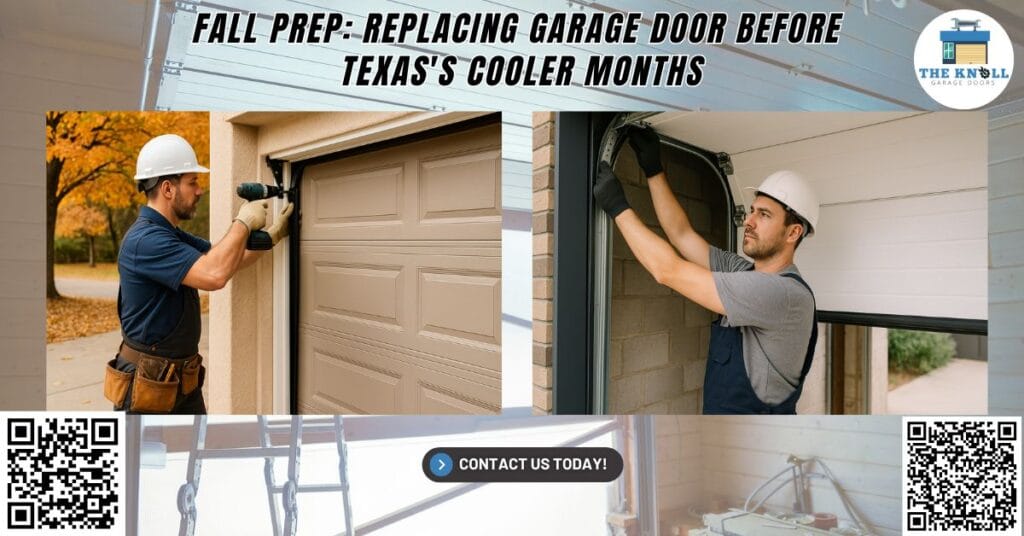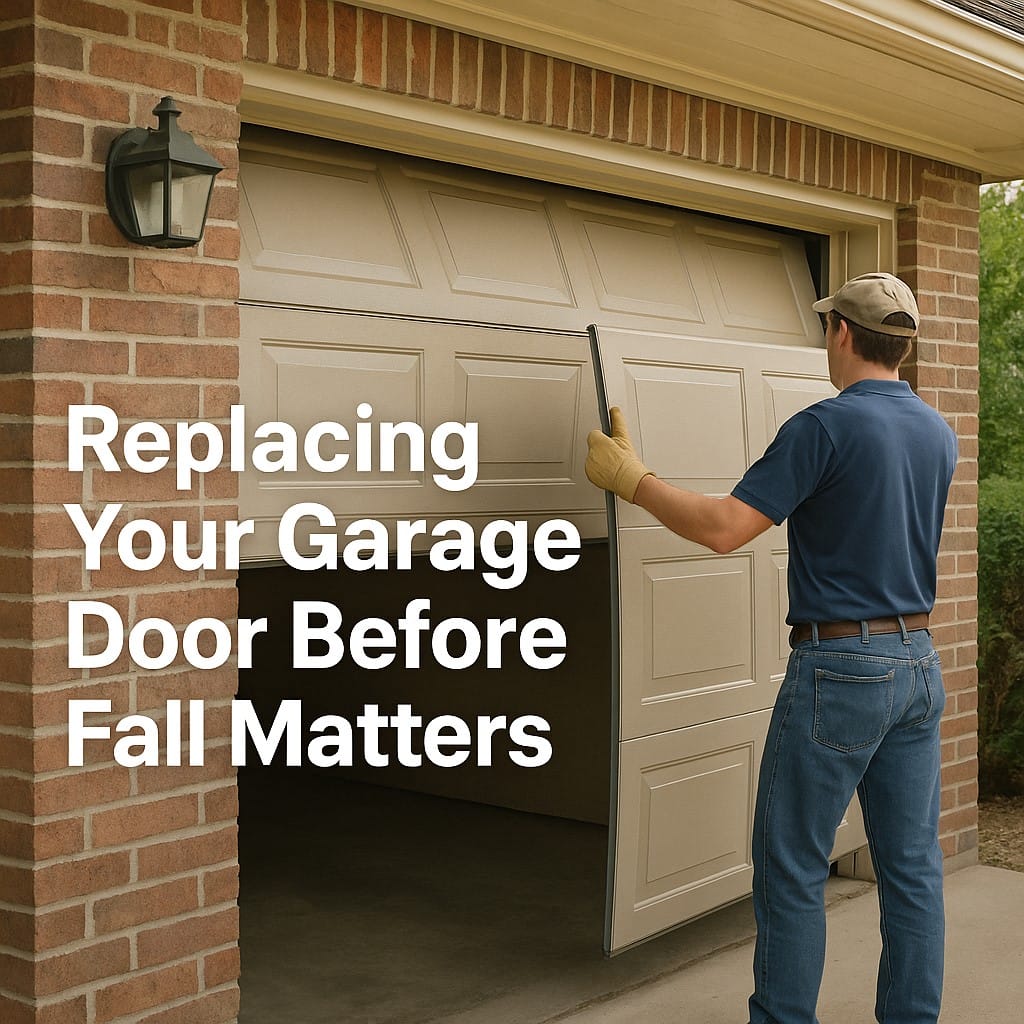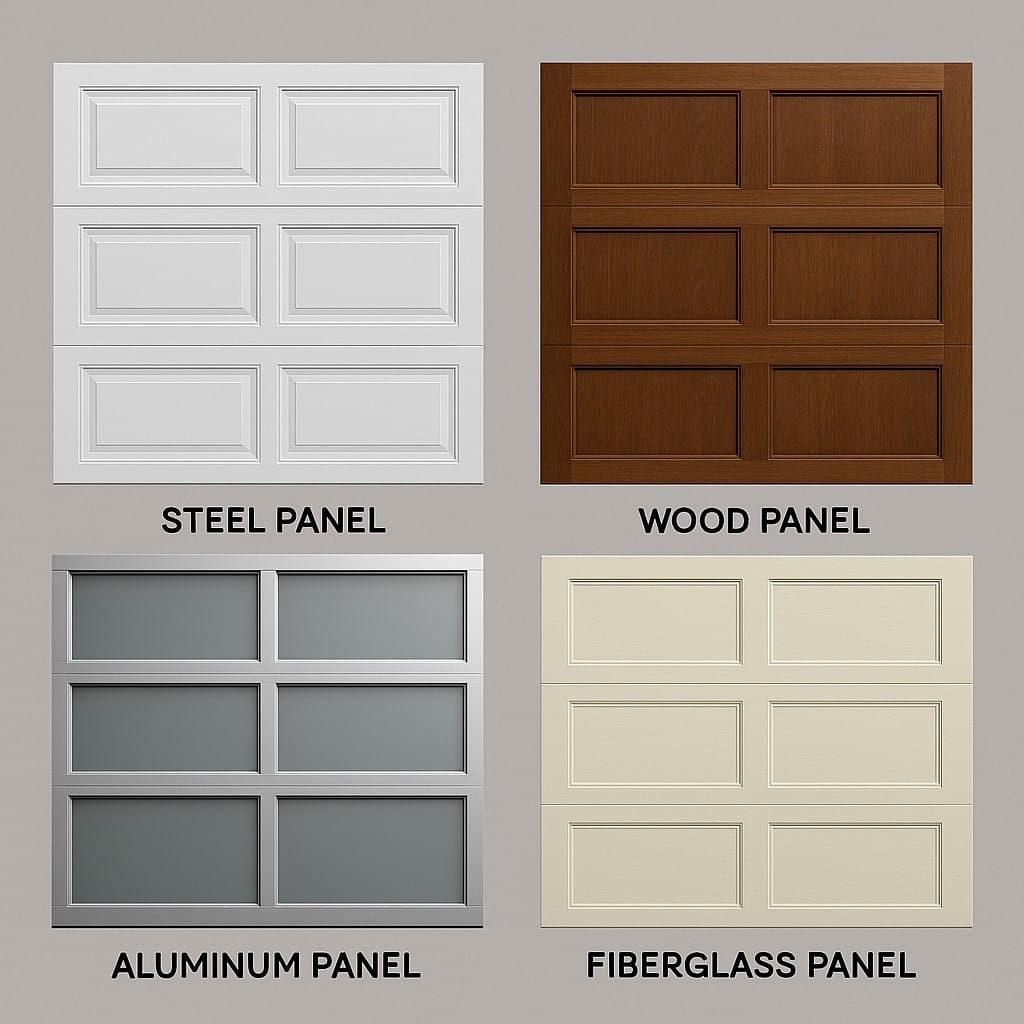Fall Prep: Replacing Garage Door Before Texas's Cooler Months

Earlier this fall, a homeowner from College Station contacted us after their garage door opener began to fail during cold mornings. The garage door springs creaked loudly, the bottom panel was visibly warped, and their outdated opener didn’t include any backup battery support. With Texas’s cooler months quickly approaching, we recommend a garage door replacement. That new door system, complete with torsion springs, foam insulation, and a smart garage door opener, transformed their garage into a quieter, safer, and more energy-efficient part of the home.
If you’ve been putting off replacing your garage door, fall is the ideal time to act. According to remodeling reports, a new garage door consistently ranks as a top project for return on investment. It enhances curb appeal, improves energy efficiency, and reduces the risk of costly repairs during the winter. As Texas transitions to cooler temperatures, ensuring your garage door system is well-prepared can save you time, money, and future headaches.
At The Knoll Garage Doors, our mission is to keep homes in College Station safe and fully operational year-round. We’ve written this comprehensive guide to help you understand why garage door replacement before winter is a smart move, what features to look for, how the installation process works, and tips to ensure a longer lifespan for your system.
Why Replacing Your Garage Door Before Fall Matters

Your garage door is one of the hardest-working parts of your home. It’s used multiple times per day and plays a vital role in security, insulation, and daily convenience. As temperatures begin to drop in Texas, worn door springs, aging openers, and under-insulated door panels can quickly become liabilities.
Common Fall and Winter Garage Door Challenges in Texas:
- Torsion springs and extension springs lose tension faster in colder air, leading to sudden breakage.
- Older garage door openers without a backup battery might fail during a power outage caused by winter storms.
- Insulation value (measured as R-value) becomes critical for keeping garages and homes warm and energy-efficient.
- Cracked or warped door panels can allow cold drafts, moisture, and pests into your garage.
- Poorly maintained track systems may misalign during temperature shifts, creating dangerous or frustrating conditions.
Replacing your old door now ensures smooth operation, better energy savings, and long-term safety, before you run into issues when it’s cold and inconvenient.
Clear Signs You Need a Garage Door Replacement Before Cold Weather
Not sure if it’s time to upgrade your garage door system? Below are the most common red flags we see:
1. Door Hesitates, Sticks, or Makes Noise
If your door hesitates to open, makes grinding sounds, or shakes during movement, it’s often a sign that your garage door springs, hinges, or track alignment is compromised.
2. Air Drafts and Poor Temperature Control
A garage that feels as cold as the outdoors likely lacks proper insulation. Older doors without foam insulation or weatherstripping reduce your home’s energy efficiency and increase heating costs.
3. Multiple Repairs Within a Year
Frequent calls for garage door repair (broken cables, faulty openers, damaged rollers, etc.) indicate a failing system. Replacing the whole door is often cheaper than replacing parts repeatedly.
4. Outdated Technology and Openers
Still using an older chain-driven opener from a decade ago? Modern openers from brands like LiftMaster and Chamberlain garage doors include Wi-Fi, smartphone control, and Amazon Alexa integration, making your system more reliable and secure.
Choosing the Right Garage Door for Fall: Materials, Features, and Insulation
Your choice of garage door can significantly affect how well your home performs during cooler weather. Let’s break down the best materials, features, and insulation options to consider before replacing your old door.

Best Garage Door Materials for Texas Weather
- Steel Garage Doors
✅ Durable, cost-effective, and compatible with foam insulation
✅ Low maintenance, resistant to cracking, and supports smart openers
✅ Ideal for homeowners who want energy efficiency and security - Wood Garage Doors
✅ Customizable with natural charm and beauty
✅ Requires more maintenance (sealing, painting) to prevent warping or rot
✅ Best for those prioritizing aesthetic curb appeal - Aluminum and Glass Garage Doors
✅ Modern appearance and natural light benefits
✅ Lower insulation unless upgraded with layered panels
✅ Good for detached garages or low-use applications - Fiberglass Garage Doors
✅ Lightweight and moisture-resistant
✅ Doesn’t rust or corrode
✅ Lower R-value unless layered with insulating foam
Key Features to Consider
- Foam Insulation for high R-value and temperature stability
- Backup Battery to ensure your garage door opener works during power outages
- Wi-Fi and smartphone integration for remote operation
- Security cameras and motion sensors for added peace of mind
- Safety sensors to prevent accidents with kids or pets
- Glass inserts for natural light while maintaining privacy
Step-by-Step Guide to the Garage Door Replacement Process
At The Knoll Garage Doors, we follow a precise and professional step-by-step guide to ensure your garage door installation goes smoothly:
Step 1: Inspection and Consultation
Our technicians inspect your current system, checking torsion springs, panels, track alignment, and the condition of your garage door opener.
Step 2: Door and Feature Selection
You choose your preferred materials, design, insulation, and additional features. We’ll help you balance garage door cost, performance, and style.
Step 3: Removal of Old Door
We dismantle your old house’s ventures-style door safely, removing bottom panels, springs, rollers, and all hardware using proper tools.
Step 4: New Garage Door Installation
The first panel is installed and leveled. Next, we add upper panels, align tracks, install the opener, safety sensors, and any smart features.
Step 5: Testing for Safety and Smooth Operation
We run the door through multiple open/close cycles, test spring tension, and ensure the door operates without sticking, dragging, or noise.
Step 6: Final Walkthrough and Maintenance Tips
You’ll receive a maintenance checklist including lubrication tips, backup power testing, and guidance on using smartphone apps.
How Much Does Garage Door Replacement Cost?
Garage door cost depends on several factors, including size, material, features, and location:
Feature | Estimated Cost Range |
Standard Steel Door (no insulation) | $900–$1,500 |
Insulated Steel Door with Smart Opener | $1,500–$2,500 |
Custom Wood or Glass Door | $2,500–$5,000 |
Installation Labor (varies by system) | $200–$600 |
Choosing a well-insulated door and advanced openers might raise your initial investment, but can reduce energy bills and prevent costly repairs later on.
Fall Maintenance Tips to Extend Door Lifespan
Once you install a new garage door, follow these seasonal maintenance tips:
- Lubricate torsion springs, rollers, and hinges with silicone-based spray
- Check track alignment and tighten all brackets
- Clean the panels and inspect the weather stripping
- Test your backup battery and smartphone access monthly
- Schedule regular maintenance twice per year for system checks
Just a little bit of upkeep can prevent major repairs and ensure smooth operation all year long.
How Can The Knoll Garage Doors Help You?
At The Knoll Garage Doors, we’re proud to serve College Station and the surrounding Starling Garage Doors communities with reliable, professional, and affordable garage door services. Whether you need a garage door replacement, garage door repair, or a full garage door installation, we’ve got the tools, expertise, and top-tier products to deliver results.
We offer:
✅ Full garage door system replacements
✅ Steel, wood, fiberglass, and aluminum options
✅ Energy-efficient insulated panels and foam cores
✅ Smart openers with Wi-Fi, backup battery, and security add-ons
✅ Emergency service and fall/winter readiness inspections
📍 Visit us at:
2322 Texas Ave S, College Station, TX 77840
📞 Call us today at: (979) 978-0221
Get ready for the cooler months with a new garage door that’s safe, stylish, and strong. Let us help you take the next step toward a better garage before the cold hits.
Frequently Asked Questions (FAQs)
1. How long does a typical garage door replacement take from start to finish?
Most standard garage door replacements can be completed in 4 to 6 hours, depending on door size, system complexity, and weather conditions.
2. Can I reuse my existing garage door opener with a new door?
Yes, if the opener is compatible with the new door’s weight and height, but upgrading to a newer model may provide better performance and smart features.
3. What’s the difference between torsion springs and extension springs?
Torsion springs provide smoother, more balanced lifting and are mounted above the door, while extension springs stretch along the tracks and are generally less durable.
4. Will a new insulated garage door reduce my energy bills?
Yes, especially if your garage is attached to your home, insulated doors with a high R-value help maintain temperature and reduce strain on your HVAC system.
